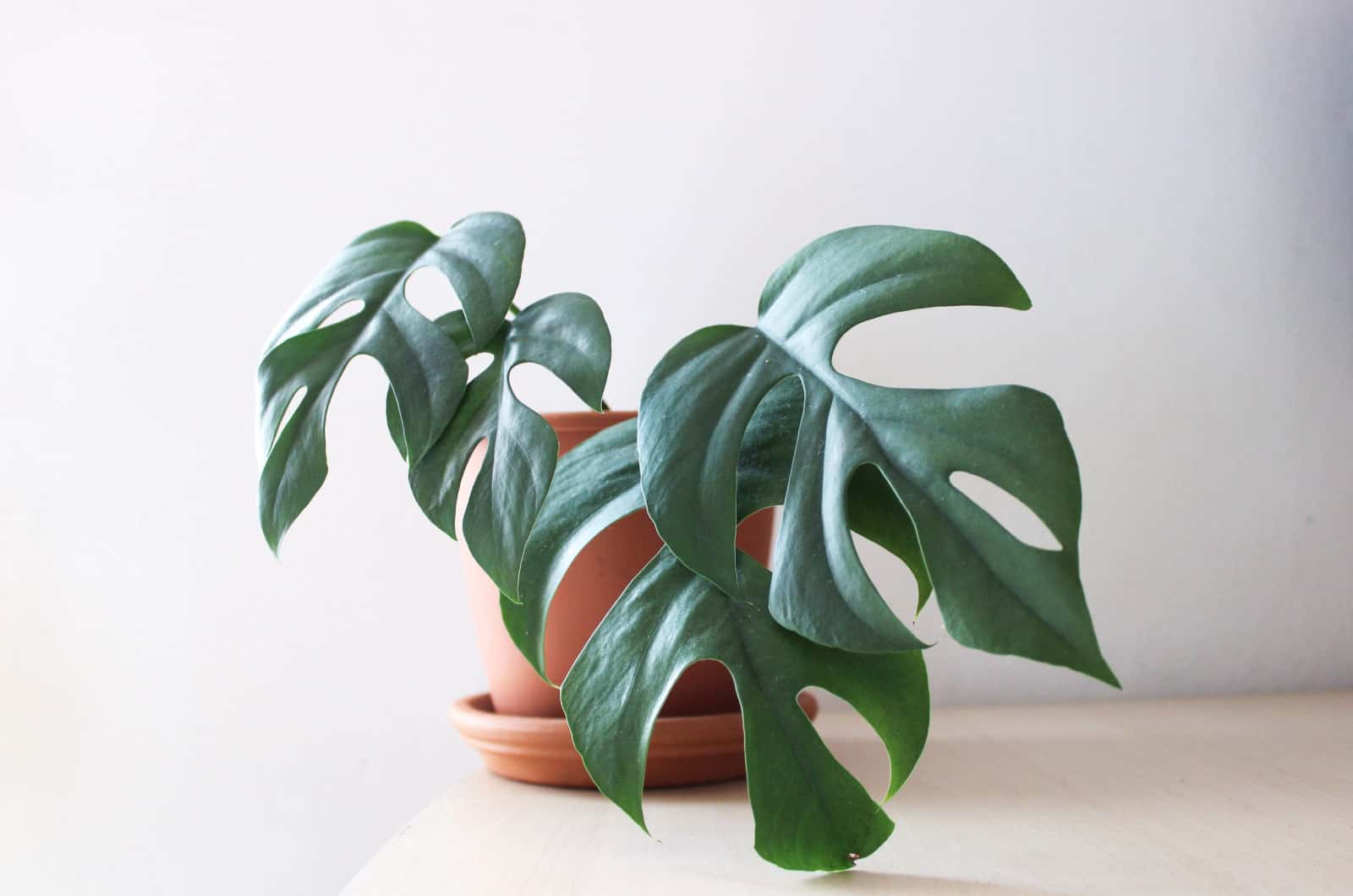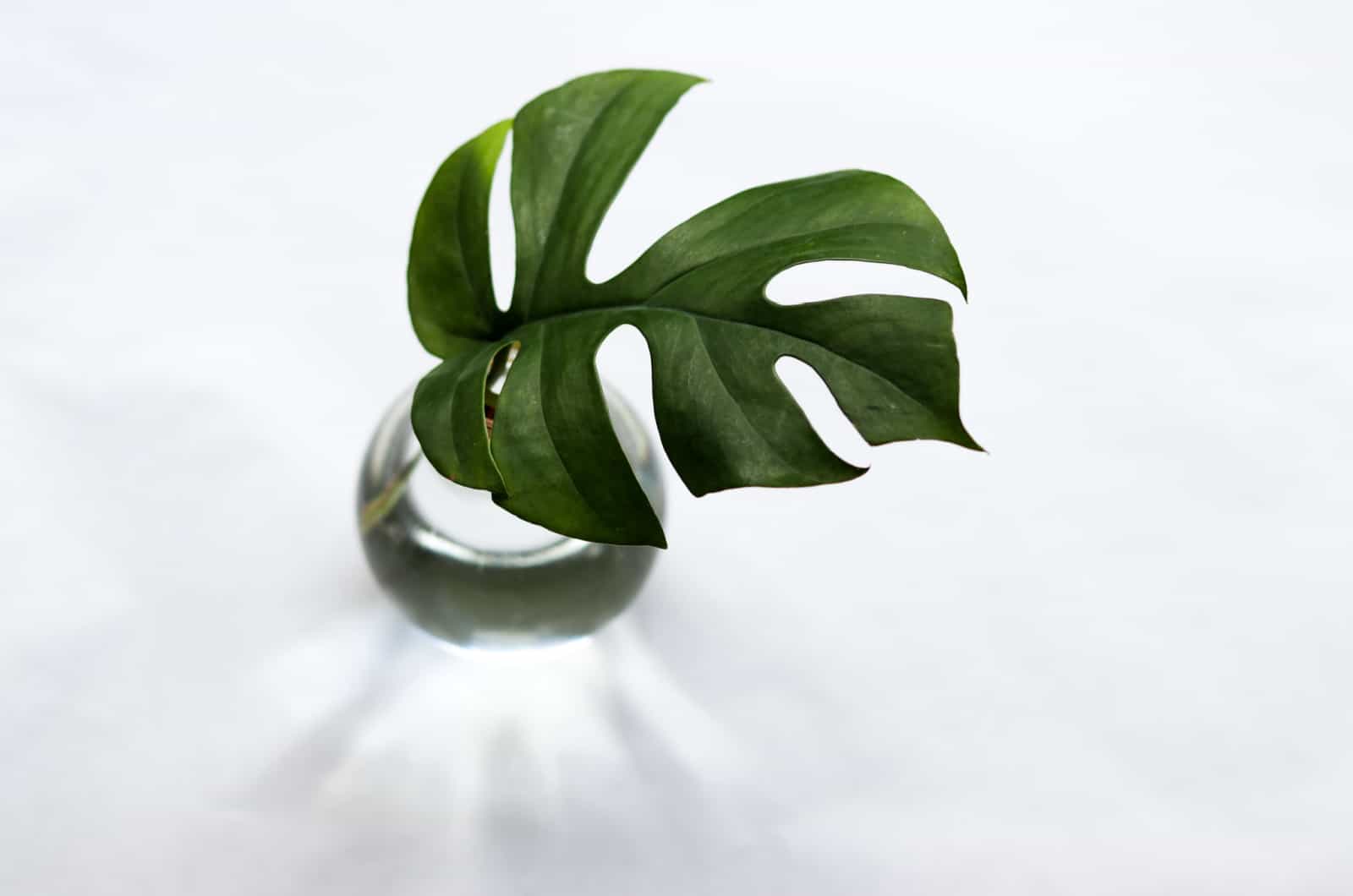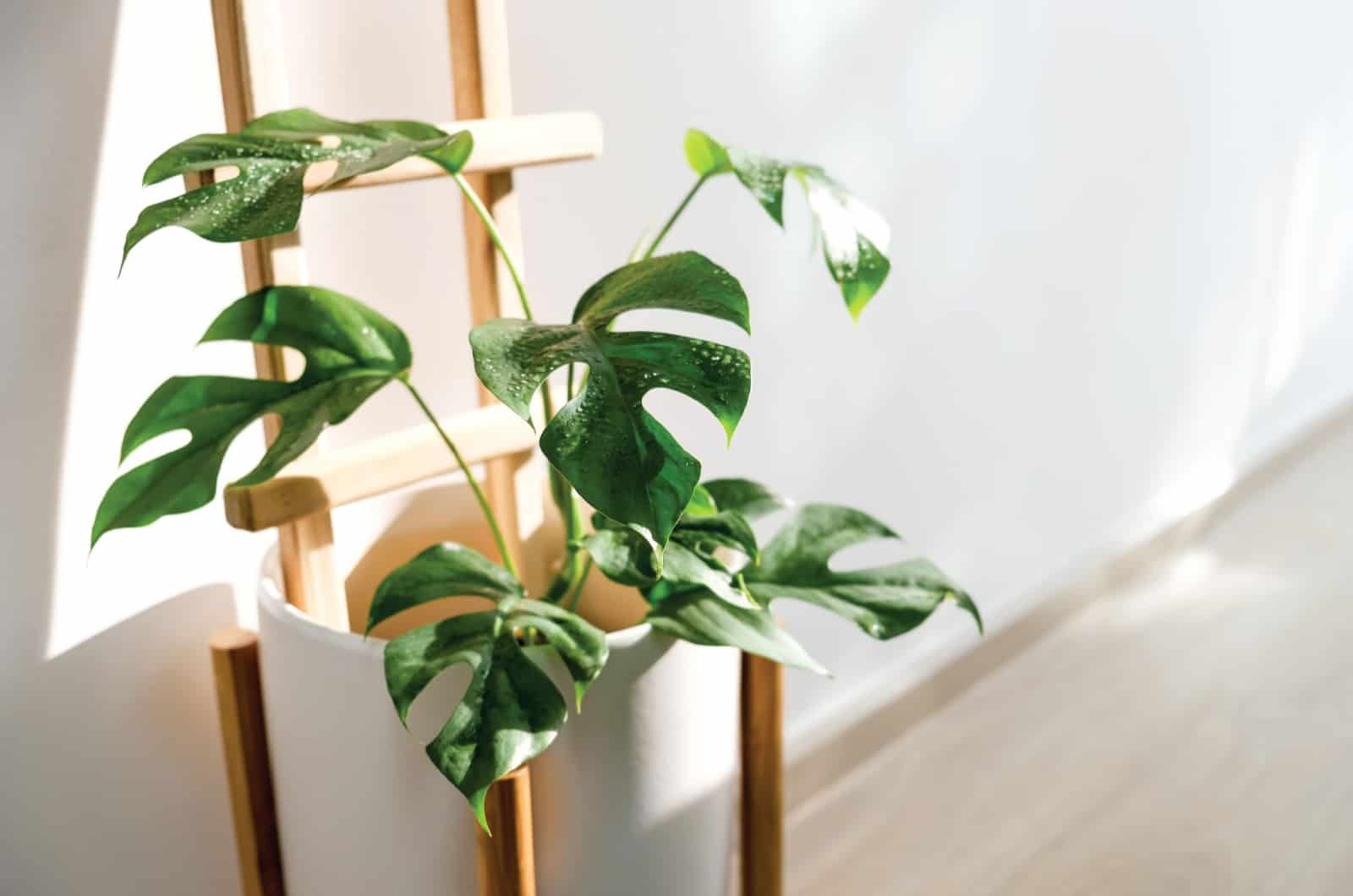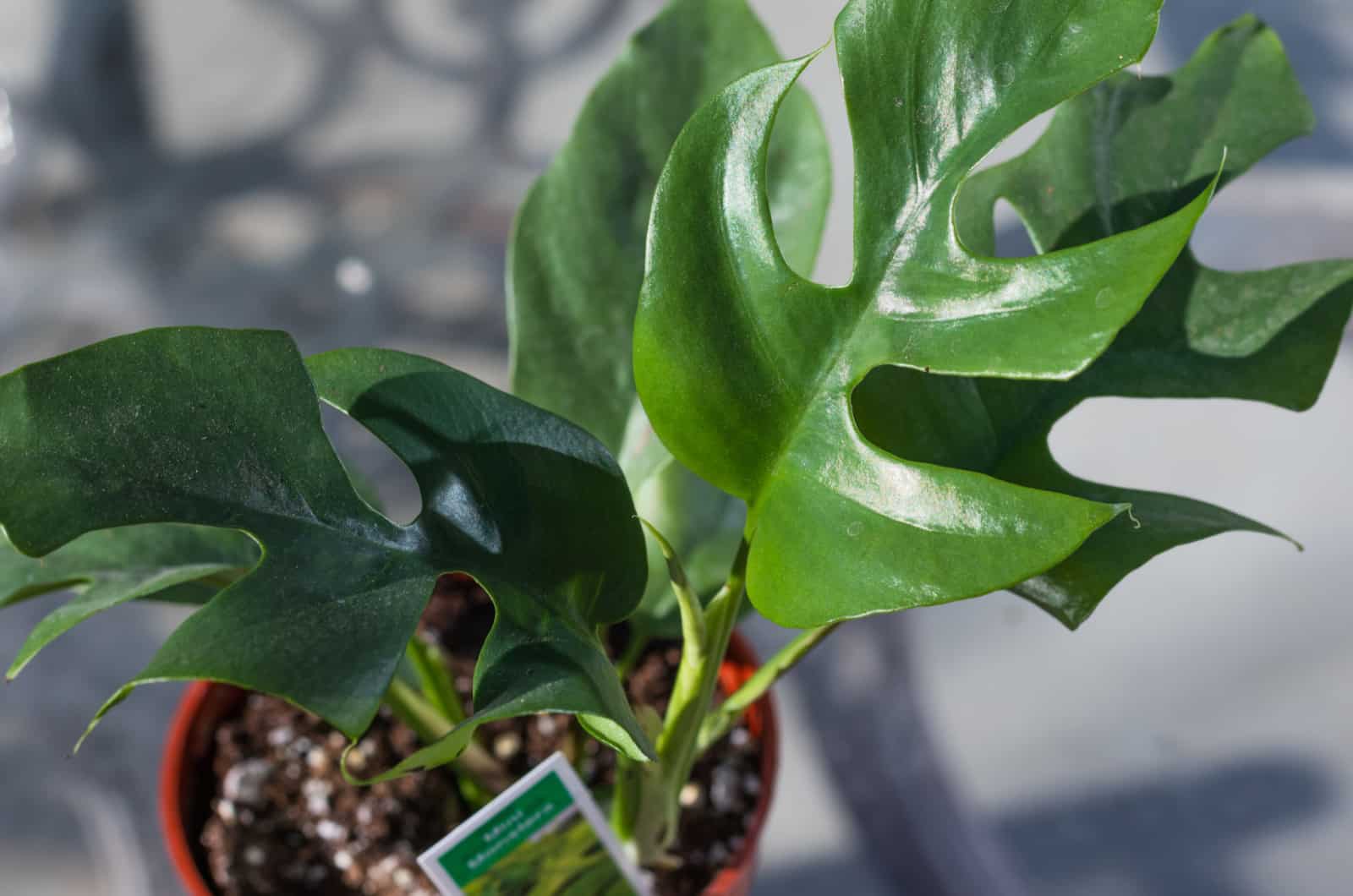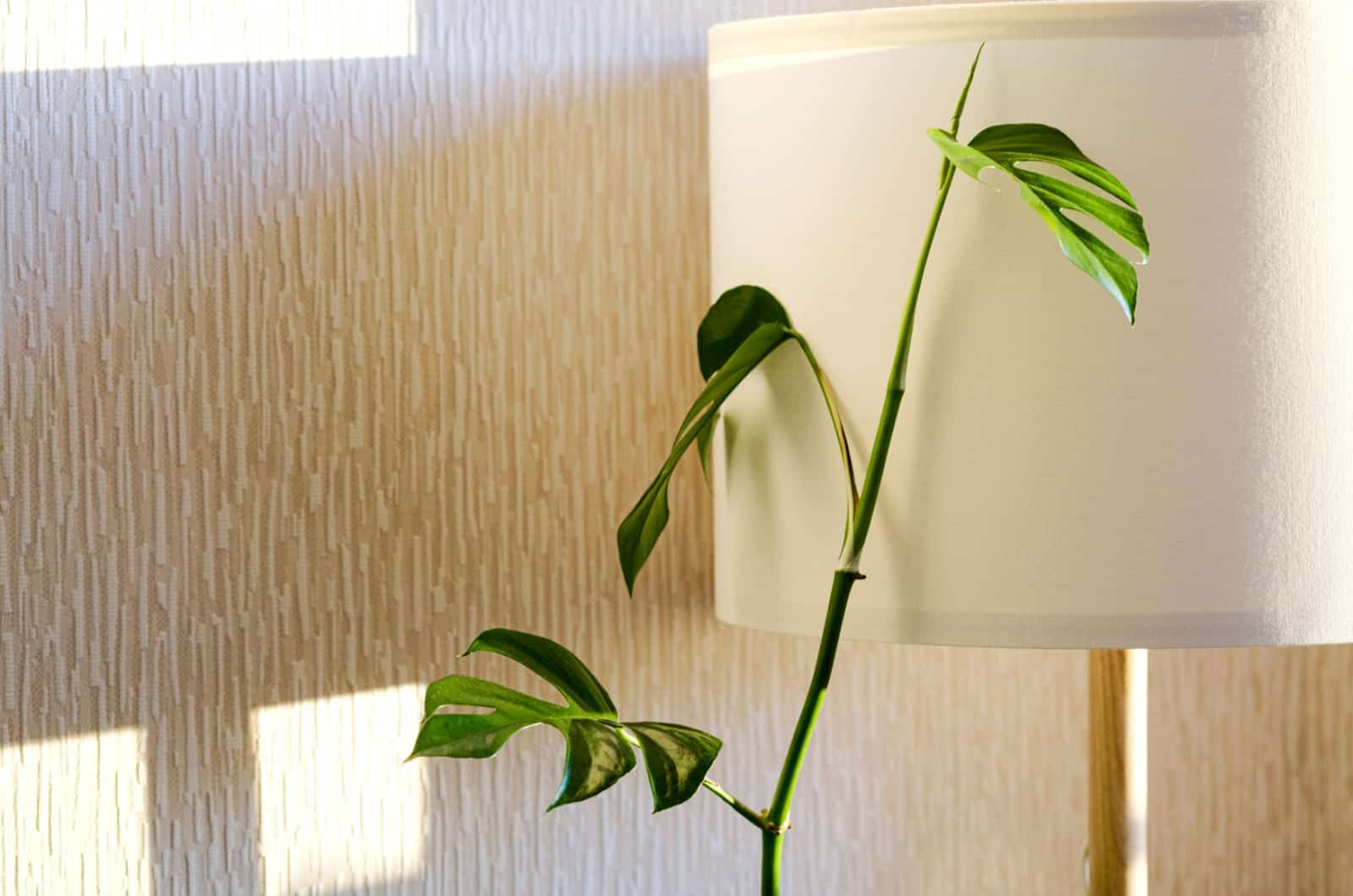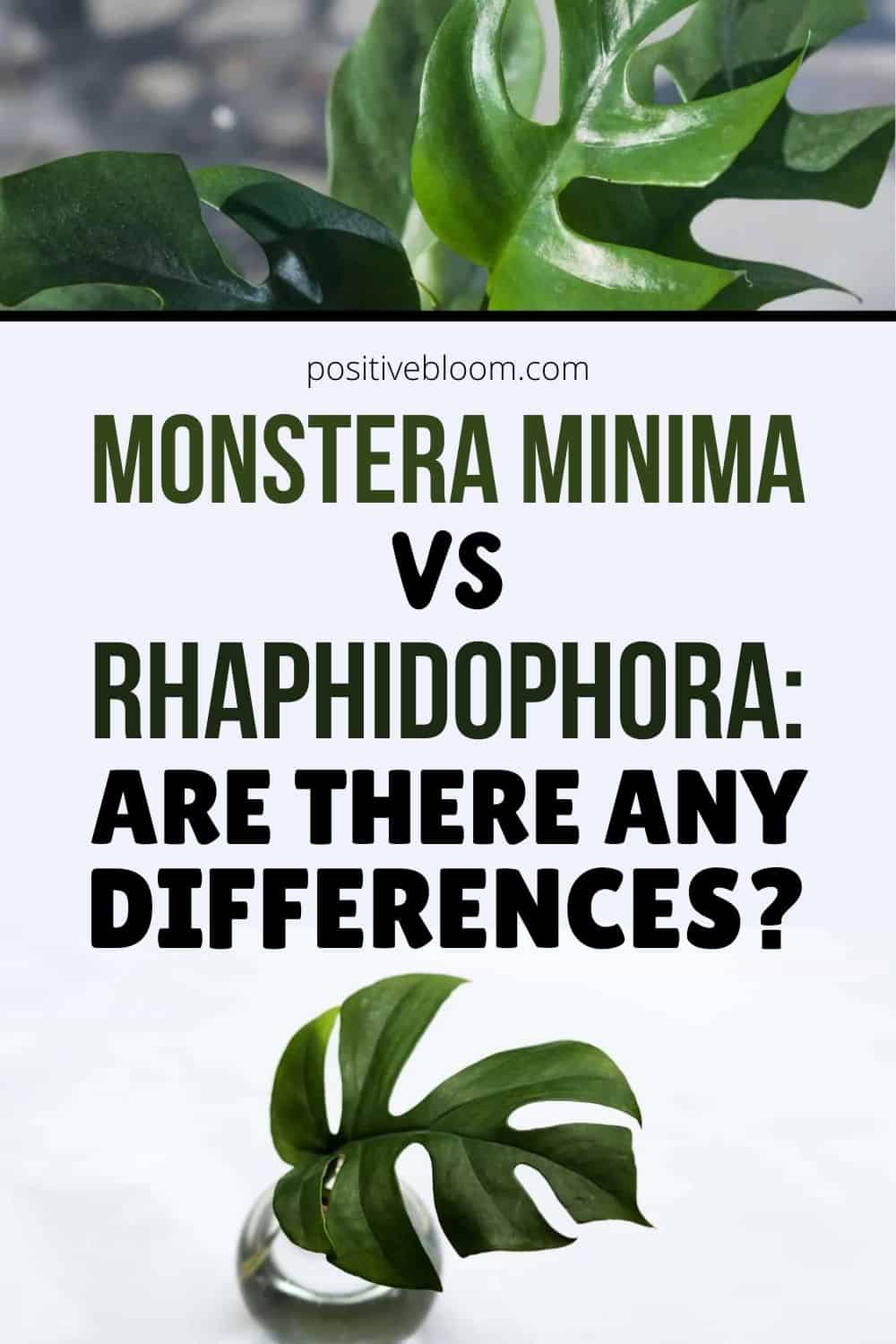Buying a new houseplant is always a thrill, especially because there are plenty of absolutely beautiful plants that can grow perfectly well indoors to choose from. One of the most common houseplants are definitely Monsteras.
Monstera plants usually have big, deep-green leaves with lots of fenestrations that can fit any type of home decor. However, these plants are quite big and take up lots of space, which is why plant enthusiasts are always looking for alternatives.
Great alternatives would be Mini Monsteras or Rhaphidophora tetrasperma… but are there any differences between these two plants? How can you decide which plant you should buy?
To find out the answer, keep reading our thorough analysis of Monstera Minima vs Rhaphidophora!
Monstera Minima vs Rhaphidophora
When I compare two plants, I usually start with their differences before talking about any similarities.
In this case, I don’t have anywhere to start because these two plants represent the same thing — Rhaphidophora tetrasperma, aka Monstera Minima, aka Mini Monstera, aka Philodendron Ginny, aka Philodendron Piccolo, aka Monstera Ginny… they are all the same plant!
It’s usually the names that get mixed up, which is why most growers think that they are two different plants. Taxonomy is a common issue these days, especially because there are a lot of folk names used for the same plant.
In these cases, I would suggest you always look for the scientific name because they are familiar to all botanists. Instead of looking for Philodendron Ginny, just say Raphidophora Tetrasperma and you’ll get the right plant!
It can be quite confusing because a completely different plant species is also referred to as Monstera and Philodendron, when it is actually neither of them!
The Rhaphidophora is a tropical plant that belongs to the Araceae family. Rhaphidophora tetrasperma looks quite similar to Monstera deliciosa — they are both aroids that differ in size, which is why Rhaphidophora tetrasperma got the name “Mini Monstera”.
More About The Rhaphidophora Tetrasperma
Let’s learn a few things about the Rhaphidophora tetrasperma, as well as its plant care guide. Here is some general information to get us started:
[table id=313 /]Leaf Shape & Size
We are talking about the Mini Monstera, so it’s obvious that this plant produces smaller leaves than the rest of the Monstera plants.
Leaves of young plants don’t have any fenestrations, and they usually develop as the plant matures.
The leaves have an intense green color, and they don’t often grow more than a foot long. They have a similar oval shape to the rest of Monstera plants, though they have a somewhat smoother and glossier texture.
Growth Habit
The Rhaphidophora is quite a fast grower, and it actually grows faster than most Monstera plants!
When they grow in the wild, these plants can reach up to 15 feet tall. However, if they are grown as indoor plants they usually reach about 4 to 5 feet tall.
We are talking about a vining plant, so you will have to provide it with something to climb on. For instance, you can invest in a trellis or some moss poles, or even try to stake them with bamboo sticks, though they are suitable for young plants only.
Natural Habitat
Many tropical plants are grown as houseplants, and the most important thing is to try and mimic their natural habitat as closely as possible.
This mini princess is naturally found in Malaysia and Thailand. This plant’s natural habitat is described as “Disturbed rather dry to moist or wet forest on sandstone and granite. 190-760m altitude”.
They are vining plants both in nature and when grown indoors.
Rhaphidophora Tetrasperma vs Monstera Deliciosa
When compared side by side, it might be difficult to tell the difference between Rhaphidophora Tetrasperma and Monstera Deliciosa.
The adoption of familiar names for these plants only adds to the misunderstanding.
However, if you grow both of these plants next to each other, you will notice that the Rhaphidophora Tetrasperma grows faster than the Monstera Deliciosa. You can also look at the Monstera leaves because they are larger than the Rhaphidophora’s.
Monstera Deliciosa, also known as Split-leaf philodendron and Philodendron Monstera, usually grows much taller than Mini monstera, and can reach up to 15 feet tall!
If we take a look at the price tag, we can see that the Rhaphidophora Tetrasperma is more expensive than Monstera Deliciosa. The Mini Monstera will cost between $5 and $20, and the Monstera Deliciosa is priced between $20 and $40. There are price variations depending on factors including location, plant size, and color.
Another similarity is that both of these plants are toxic because they contain calcium oxalate in their plant juice. After a year of flowering, the Monstera Deliciosa fruit does become edible, while the Rhaphidophora Tetrasperma never yields any fruit.
Despite modest variations in the conditions each plant needs in order to develop healthily and prosper, the plant care tips are quite similar for both species.
The Mini Monstera differs in that it requires watering once a month in the winter, unlike the Monstera Deliciosa, which doesn’t need water during the winter at all.
Rhaphidophora Tetrasperma Plant Care Guide
You must try to mimic the plant’s natural habitat if you want them to grow happy and healthy. In this case, this involves all tropical growing conditions, including low light, moist soil, and soil rich in organic matter.
It doesn’t take much to make our Mini princess happy! Keep reading to learn all about the ideal growing conditions for your Mini monstera.
Soil Requirements
Most tropical plants require potting soil that is well-draining and porous so the oxygen can reach their aerial roots.
For our Mini monstera plant, the perfect potting mix consists of coco coir, sphagnum moss, orchid bark, and perlite.
Perlite is also crucial because it improves the drainage of the soil. Another extremely important step is to put these plants in pots with drainage holes in the bottom. Drainage holes help to remove excess water that would otherwise stay in the soil and attract various pests and fungi.
The best pot for a Monstera minima plant would be made of porous material and have drainage holes in the bottom, such as one made of terracotta. However, you can choose some other material that suits your style.
Lastly, make sure that the soil’s pH levels are about 7 because these plants prefer alkaline soil (you can buy soil tests on Amazon to examine pH levels).
Water Requirements
Given that the Mini Monstera is native to tropical regions of Asia and Africa, you might think that it requires a lot of water.
But this plant doesn’t require much water at all! Remember that too much water can harm the roots of your plant. Overwatering your Monstera minima plant can lead to lots of issues, and an obvious sign of overwatering is yellowing of the leaves.
In the worst-case scenario, your Monstera minima plant will get root rot, which is a fungal disease that can seriously damage your plant.
Don’t allow the potting soil to dry out completely either, because it can become too compact and prevent the roots from absorbing water and other necessary nutrients.
I would suggest you check the soil before watering, and if the top few inches have dried out, you should water your plant. Otherwise, postpone watering for a few days.
Light Requirements
Light conditions can seriously affect your Mini monstera, especially if you are growing a variegated Mini monstera.
It’s not a good idea to expose your Mini Monstera to direct sunlight. The leaves of this lovely plant could become damaged by the sun, and the variegations might disappear!
Although it may seem like a good idea to use low light, the best option is bright indirect light.
The plant may be unable to produce leaves with fenestrations due to low light, so if your mature plant still doesn’t have any fenestrations, you should consider moving them to a brighter area.
You can grow your Mini monstera in a hanging basket or in a regular pot, just make sure that you don’t put it next to a window that gets direct sun throughout the day.
Temperature Requirements
Tropical regions are very warm, so this plant will thrive in higher temperatures.
Don’t worry, the temperature doesn’t have to be 100 degrees!
All you have to do is try and keep the temperature above 65 degrees Fahrenheit. Anything above 80 degrees Fahrenheit can be damaging to your plant, so keep that in mind as well.
In order to prevent stressing out this tiny climber, it is crucial to keep the plant away from any heat sources, because heat increases the requirements for moisture — this includes radiators and space heaters.
This plant doesn’t respond well to cold drafts either, so make sure to keep it away from air conditioning and vents.
Humidity Requirements
As well as growing in warmer temperatures, these plants are also used to humid environments!
They prefer growing in humidity levels from 60% to 90%.
So, if you live in a drier area, you should definitely find some ways to boost humidity!
Luckily, there are a few simple ways that you can improve humidity. For instance, you can invest in a humidifier — these are the simplest solution because you can control the settings and the device can automatically turn itself on and off, and you won’t even spend much money because they are not as pricey as they used to be.
However, if you don’t want to spend any money, you can create a pebble tray by putting some pebbles in a tray, covering them with water and putting your plant on top. As the water from the tray evaporates, your plant will get just enough moisture.
You can also try misting your plant daily or putting your plant in a more humid room like a bathroom or kitchen (just make sure that they get proper lighting).
Fertilization Requirements
You should fertilize the Mini Monstera consistently during its growing season. Once a month throughout spring and summer will help maintain healthy growth and the development of its leaves.
It is recommended to use a typical fertilizer.
Calcium, potassium, phosphorus, magnesium, and nitrogen should all be included in a Mini Monstera’s food.
Repotting
We have already discussed the growth habits of the Rhaphidophora tetrasperma, so we know that they are fast-growing plants. With that being said, you will definitely have to repot it more frequently than other plants.
Monstera plants should usually be repotted once every two or three years, though this can be slightly different with the mini version.
I would recommend you check if the roots have started coming out of the drainage holes — if so, then it’s time for repotting!
I usually repot my plants at the beginning of the growing season so they can adapt during the growing season. It’s important that you prepare an adequate potting mixture and buy a new pot that is slightly bigger than the previous one (usually an inch or two larger).
Make sure that your new pot also has drainage holes in the bottom as they are crucial for preventing overwatering.
Propagation
You can easily propagate your Mini monstera using the stem cutting method. The propagation process is extremely similar to that of pothos, so if you have experience with propagating pothos plants, you definitely won’t have any issues with this plant!
Here are the first four steps for the stem cutting propagation method:
1. Remove a stem using a clean, sterilized knife. Make sure there are a few nodes on it.
2. Put the cuttings in fresh soil or in water (just make sure that you change the water every other day until the roots have developed).
3. Select a location where the jar or container will get indirect light.
4. Wait for the roots to grow one to two inches long. You can transplant once the roots are long enough.
Take note of the following:
• Before beginning propagation, make sure the Rhaphidophora Tetrasperma is absorbing enough nutrients by moistening the soil each day.
• You will be cutting stems with nodes attached, so there is no need to remove the plant from its pot.
• Don’t forget to water your new plant.
Rhaphidophora Tetrasperma: Common Issues
Unfortunately, problems can arise with houseplants just like any other indoor plant.
Overwatering, poor humidity, low light levels, and uncontrolled temperatures are the main causes of the issues.
Furthermore, annoying pests may appear on the leaves and roots of your plant.
Let’s examine these problems and learn about their solutions.
Brown Leaf Tips
Examine the moisture and humidity levels if you notice the edges of the leaves have turned brown and crispy.
The soil should be consistently moist, but not soggy, and humidity levels should always be around 60% or higher.
As we already said, you can invest in a humidifier or create a pebble tray.
Yellow Leaves & Root Rot
Leaves turning yellow are the first sign of overwatering. Usually, some leaf discoloration indicates pest infestation, however, yellowing of the leaves is mostly caused by overwatering.
If you notice yellow leaves, stop watering the plant so frequently and see if the soil has started to smell funny — if so, then repot the plant because it’s definitely infected with root rot.
When repotting, make sure to trim off any brown or decaying leaves and always use fresh soil.
If your plant reaches the point where it can no longer be saved, you should at least try to propagate it.
Curly Leaves
Rhaphidophora tetrasperma leaves will begin to curl due to low lighting conditions, sudden temperature changes, and low humidity levels.
Once the leaves start curling or looking droopy, make sure that you put the plant in an area with adequate lighting and provide them with higher temperatures and humidity.
Pests
Unfortunately, this plant is susceptible to pests like fungus gnats, scales, and spider mites. Root systems can suffer long-lasting damage from fungus gnats as they devour the roots.
Insecticide is the most effective technique for getting rid of fungus gnats, though there are a few other tricks you can use to get rid of plant flies, such as setting traps or adding gravel to the soil surface!
Tiny brown or white spots will form on the leaves as a result of spider mites infestation.
Spider mites can be removed with water and alcohol. Apply the mixture to a cloth and gently rub the leaves with it. Dish soap and water can also be used. Rub the leaves lightly with a towel dipped in the mixture.
Scale insects resemble bumps on a shell. They can typically be found on the undersides of leaves. You can also use rubbing alcohol to remove them, though I would suggest you use neem oil as it is the best natural pesticide out there!
Frequently Asked Questions
1. How can you tell the difference between a Rhaphidophora tetrasperma and Monstera deliciosa?
First, you have to look at their size — Rhaphidophora tetrasperma is not called Mini monstera for no reason! This plant will grow smaller than the Monstera deliciosa and produce significantly smaller leaves.
The Rhaphidophora also has light green leaves, while the Monstera produces dark green leaves.
Monstera will grow at a slower pace compared to Rhaphidophora, though they can grow higher.
Young Rhaphidophora tetrasperma will produce leaves that have no fenestrations whatsoever — these will develop as the plant matures.
Another difference is that the Monstera deliciosa produces fruit after a year of flowering, while Rhaphidophora tetrasperma never yields any fruit.
2. Is the Monstera a Philodendron?
Philodendron Piccolo or Ginny Philodendron is another name for Rhaphidophora Tetrasperma, and Split-Leaf Philodendron is another name for Monstera Deliciosa.
Many people refer to one plant by all of these names. The split leaves, the color of the foliage, and the shape of the leaves bear a faint resemblance. The Araceae family includes all three of these plants.
These plants, however, are entirely distinct due to their taxonomical classification and numerous other general characteristics, so they are not the same as Philodendrons!
3. What kind of plant is the Rhaphidophora tetrasperma?
The Rhaphidophora tetrasperma is a perennial, vining plant that originates from a tropical region. If you consider growing this plant, make sure to provide it with some kind of support (such as a trellis) so it has something to climb on!
To Sum Up
I guess you can say that the comparison of Monstera minima vs Rhaphidophora is somewhat pointless because, after all, we are talking about the same plant!
Most indoor plants have various names, which can be quite confusing and make it hard to determine the exact species, however, we can always use scientific names — the truth always lies in science!
Nonetheless, both the Monstera and Rhaphidophora look quite similar and have almost the same requirements, so you won’t make a mistake buying either of these plants. But if you do have a smaller space, then I would suggest you get a Mini Monstera.
I hope this article was helpful.
Until next time!
Like this post? Share or pin it for later!

